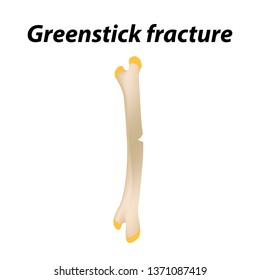Just When You Assume Alleviation Is Near, Soft Tissue Therapy Exposes Its Uncomfortable Facts-- Find Why The Process Can Be Excruciating Yet Beneficial
Just When You Assume Alleviation Is Near, Soft Tissue Therapy Exposes Its Uncomfortable Facts-- Find Why The Process Can Be Excruciating Yet Beneficial
Blog Article
Developed By-Fog Rytter
When you go through soft Tissue therapy, you might locate it surprisingly uncomfortable. This pain develops as pressure is put on strained muscle mass and broken cells, triggering your discomfort receptors. While it can really feel distressing in the moment, there's a factor behind this sensation. Recognizing what occurs in your body during these therapies can help you value the process. So, just what is going on underneath the surface?
The Physiology of Discomfort During Soft Tissue Therapy
When you undergo soft Tissue treatment, your body's response to pain is an intricate interplay of physiological processes. As the therapist uses stress, your body turns on discomfort receptors, sending out signals to your brain. This activates the release of natural chemicals, such as substance P and glutamate, which intensify the sensation of discomfort.
Your muscle mass may also tighten in response, more making complex the experience. On top of that, your body might release endorphins, natural medicines that can assist ease some discomfort.
The communication between these procedures can develop a distinct experience for each and every person. Comprehending this physical reaction aids you browse the experiences during therapy, enabling you to appreciate the balance in between discomfort and the capacity for healing advantages.
The Duty of Discomfort in the Healing Process
Although pain throughout soft Tissue treatment can feel frustrating, it plays an important duty in the healing procedure. When you experience pain, your body is signifying that it's functioning to fix damaged cells. This reaction aids boost blood circulation to the damaged area, providing essential nutrients and oxygen needed for healing.
In addition, pain can promote the release of endorphins, your body's all-natural painkillers, developing a feeling of relief post-treatment. Embracing https://www.globenewswire.com/en/news-release/2021/09/21/2300646/0/en/100-Chiropractic-Expands-National-Footprint-Into-Arizona.html can aid you understand your body's limits and urge you to attend to underlying problems.
While it's unpleasant now, this procedure is crucial for lasting recovery and boosted feature. Recognizing pain as a vital part of recovery can equip you to stay committed to your therapy.
Tips for Managing Discomfort During and After Treatment
Taking care of discomfort throughout and after soft Tissue therapy can dramatically improve your overall experience and recovery.
To begin, communicate openly with your therapist concerning your pain levels; they can adjust methods as necessary. Utilizing deep breathing methods can also assist you relax and reduce pain.
Take into consideration using ice to the treated location post-session to reduce swelling and numb discomfort. Staying hydrated help in the recovery process, so consume alcohol lots of water.
visit the following website stretching and light movement after treatment can advertise blood circulation and convenience rigidity. Finally, ensure you get sufficient remainder to enable your body to heal.
Implementing these ideas can make your soft Tissue treatment more workable and satisfying.
Conclusion
To conclude, while soft Tissue therapy can be unpleasant, it's essential to identify that this discomfort plays an important duty in your healing trip. By recognizing the physiological actions at play, you can come close to the treatment with a more favorable state of mind. Remember, the preliminary pain frequently paves the way to alleviation as your body releases endorphins. Welcome the procedure, and do not wait to utilize the tips for managing pain to improve your experience and recuperation.
